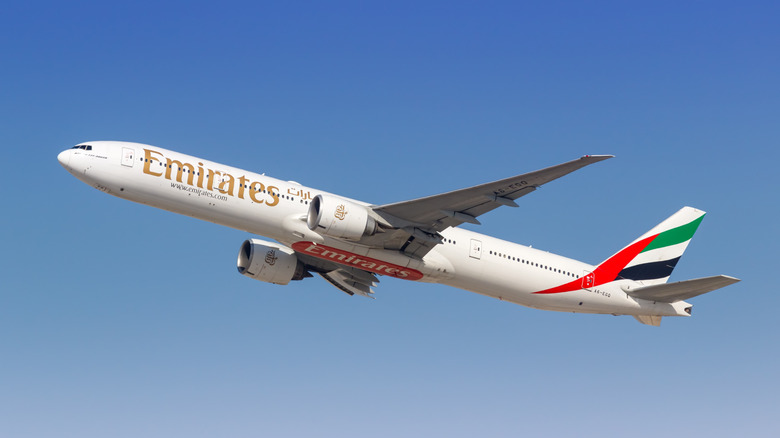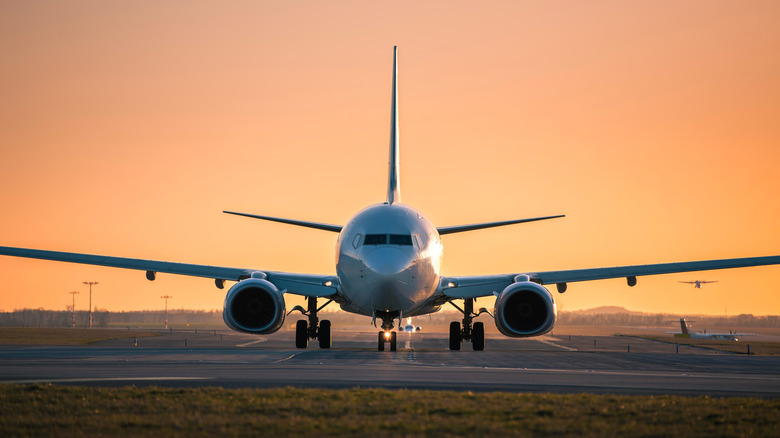Why Are Airplanes With Four Engines Being Discontinued By Manufacturers?
Four-engine airplanes like the Boeing 747 and Airbus A380 were once essential for long-haul travel. At the time, engines weren't powerful or reliable enough to handle long-haul flights, which made four engines a necessity. Safety regulations also limited how far a twin-engine jet could fly from the nearest diversion airport, making three or four engines necessary for transoceanic flights.
As technology progressed and engine reliability improved, aircraft manufacturers began exploring alternatives to the four-engine model. This led to the rise of tri-jets like the McDonnell Douglas DC-10 and Lockheed L-1011, which offered slightly better fuel efficiency while still meeting regulatory requirements for long-distance routes.
The real shift then came with the introduction of larger, more powerful jet engines in the 1990s, which paved the way for twin-engine jets to dominate the long-haul market. The Boeing 777 was the first to break through with an extended 180-minute overwater certification at entry into service, setting a new standard that the 787 and A350 would build on.
By the early 2000s, new-generation twinjets were proving they could match the range and capacity of older four-engine aircraft, and all major airlines, such as British Airways and Lufthansa, started retiring them in favor of more fuel-efficient twin-engine jets. As a result, Airbus ended production of the A380 in 2021 due to a lack of demand, and Boeing's legendary 747 is no longer being built for passenger travel. This shift was largely due to two main reasons: cost-efficiency, and changing regulations and preferences.
Four engines mean higher costs and lower efficiency
One of the biggest reasons four-engine planes are disappearing is simple: They're just too expensive to operate. Fuel costs make up a significant portion of airline expenses, and modern engines like the Rolls-Royce Trent XWB on the Airbus A350 are 25% more fuel-efficient than those on older four-engine aircraft.
Real-world comparisons back this up: On the Sydney–Los Angeles route, Qantas found it costs $305,000 to operate an A380, while a twin-engine Boeing 737 does the same route for $190,000, with fuel being the biggest cost gap. This difference is even more pronounced as fuel prices exponentially rise, making it financially unsustainable for airlines to keep using four engines.
Engines are the most expensive components to maintain. A 2009 report indicated that up to 43% of an airline's maintenance budget goes toward engines alone. Having four means double the inspection work, higher parts usage, and more time on the ground. Additionally, improvements in aerodynamics and composite materials mean that newer aircraft are lighter and more efficient. This results in lower maintenance costs and the ability to operate in a wider range of airports.
More than just cheaper, twinjets are also more flexible. Airlines can fly two smaller jets on different schedules instead of relying on a single superjumbo to sell 500+ seats in one go. Simply put, the math no longer favors four-engine planes. Airlines can fly the same routes more cheaply with modern twin-engine aircraft, making the shift an easy business decision.
Changing market demands and regulatory impact
The demand for ultra-large aircraft like the A380 never reached the levels Airbus had hoped for. The plane was designed for massive capacity, but filling over 800 seats on a regular basis proved difficult for many airlines. The COVID-19 pandemic accelerated the retirement of four-engine planes as airlines streamlined fleets to focus on cost-effective operations. Even as travel demand has recovered, airlines have doubled down on fuel-efficient, flexible aircraft rather than bringing back old four-engine giants.
Regulations have also played a key role in this shift. Previously, long-haul flights over oceans and remote regions required four-engine planes due to safety concerns. Early FAA rules stated that twin-engine aircraft had to remain within 60 minutes of an alternate airport at all times. This made transoceanic and polar routes impossible for twins.
However, advances in aircraft technology and engine reliability gave rise to ETOPS (Extended-range Twin-engine Operational Performance Standards) regulations that allowed planes to legally fly long distances. For example, the Airbus A350 is now certified for ETOPS-370, meaning it can legally fly up to 6 hours and 10 minutes away from the nearest diversion airport, effectively unlocking any route on the globe.
Additionally, environmental regulations have pressured airlines to cut emissions. Four-engine aircraft produce higher carbon emissions compared to modern twin-engine planes. Governments and regulatory bodies are enforcing stricter carbon reduction targets, incentivizing airlines to retire inefficient aircraft in favor of more sustainable options.
With more airlines prioritizing efficiency and profitability, four-engine aircraft simply no longer make sense. The aviation industry is moving on, and the giants of the sky are now becoming a part of history.


